Assistive technology, also known as AT, consists of assistive devices or gear that aid NDIS-disabled participants in accomplishing their daily activities. The AT improves an individual’s cognitive, communication, hearing, mobility, self-care, and vision. These devices could range from low-tech and high-tech gear.
All the NDIS assistive technology equipment to be used for disabled participants are required to be approved as NDIS-approved products. This enhances the disabled participants to enjoy an improved quality of life and independence. The WHO and UNICEG Global Report on assistive technology (2022) gives an overview of considerable inequity in assistive technology access. Less than 3% of low-income countries populations have limited access while 90% enjoy these devices liberally.
Devices and equipment used as assistive technology play a crucial role to support NDIS disabled participants as per the National Disability Insurance Scheme (NDIS) in the Australian continent. When the right assistive equipment and technologies are implemented, NDIS-disabled participants are empowered in their daily lives, with enhanced independence and better quality of life. This NDIS assistive technology is a game changer for individuals suffering from disabilities registered under the NDIS.
Overview of NDIS Assistive Technology
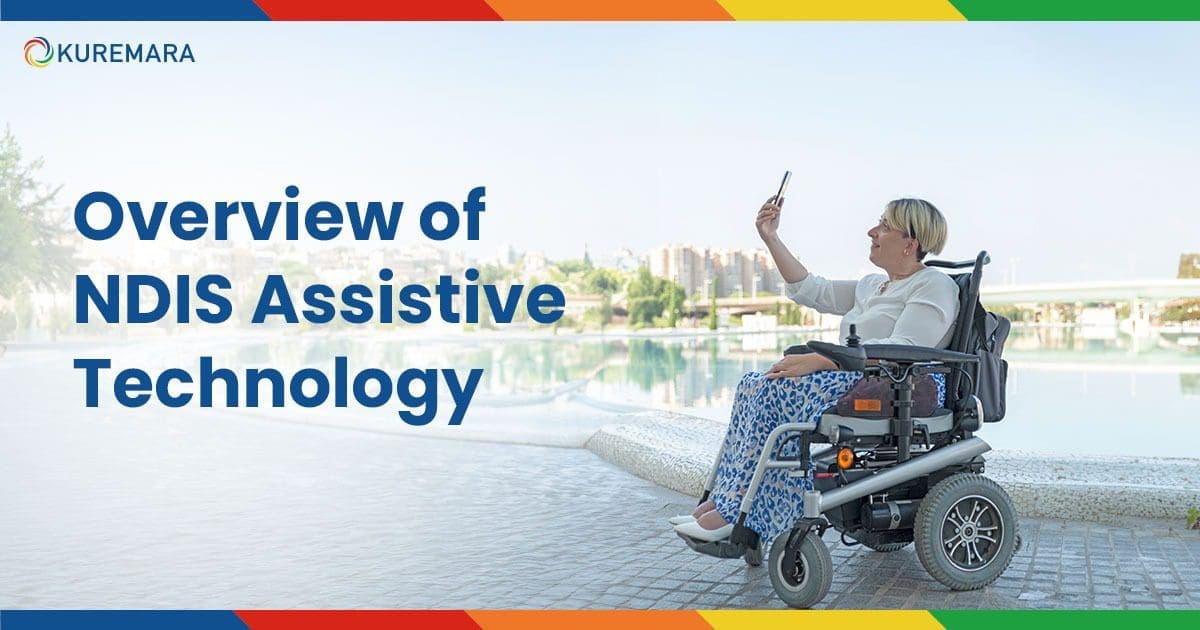
The primary purpose of assistive technology products is to sustain and elevate an NDIS disabled participant’s working efficiency and independence and focus on improving their well-being. This technology enhances social participation and promotes inclusion of individuals struggling with disability, elderly people and people with chronic issues.
NDIS-disabled participants will now be able to live independent, productive, healthy and dignified lives. They can now accomplish their goals – education, employment and engaging socially.
AT is vital to NDIS-disabled participants as it enriches their lives. This is a crucial part of their lives as it boosts their independence, accessibility and well-being. AT allows people with disability to stay connected and interact with others despite their disadvantages. With the introduction of AT, NDIS-disabled participants are able to perform their daily tasks without the help of family members or care providers. AT also enhances satisfaction, self-esteem, adaptability, safety and competence in the NDIS disabled individuals.
AT aids individuals with disabilities to perform tasks they could otherwise find difficult to complete with ease. AT enables individuals to move around freely, communicate efficiently, and ease in daily tasks.
Better Life Quality
AT contributes to a better life quality for disabled individuals. They are enabled to engage more in social events and activities and pursue their education and employment opportunities. Living life on their own terms and overcoming barriers is enhanced.
Inclusion and Involvement
AT fosters inclusions and ensures social involvement is increased in community events. These devices break down hindrances and encourage equality and social involvement.
Improved Well-Being and Health
Health and well-being of NDIS-disabled participants is impacted significantly. Assistance in medication management, medicine monitoring, and prevention of health worsening. AT improves comfort and reduces risk pressure and health discomfort.
Categories of NDIS Assistive Technology
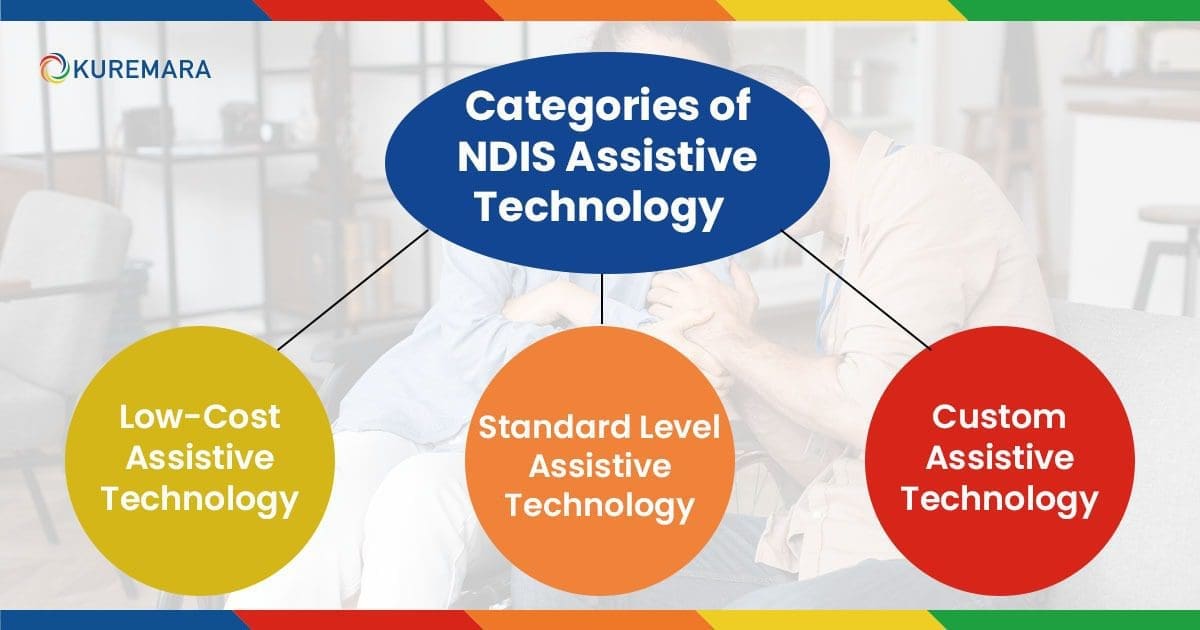 There are various categories of NDIS assistive technology equipment:
There are various categories of NDIS assistive technology equipment:
Low-Cost Assistive Technology are NDIS low-cost assistive technology products from local retail suppliers and need no or very little assistance to set up and use. These cost under $1,500 per item
Standard Level Assistive Technology can be easily accessed, tested, and trialed before the NDIS participants make the final choice. These cost between $1,500 and $15,000 per item
Custom Assistive Technology is complex and NDIS participants need an individual assessment to make sure it’s the right solution for their needs. These tools need specialised knowledge or tools to set them up and may be custom-made for their individual needs. An NDIS participant would generally need a quote, so we can include the right amount of funding in the plan.
There are various types of NDIS assistive technology used for participants with disability. These include:
- Mobility Aids – These tools help with moving around. Examples include wheelchairs, walkers, canes, and prosthetic devices.
- Communication Devices – These devices assist people with speech difficulties or language limitations. Examples are communication boards, speech output devices, and eye gaze trackers.
- Hearing Aids – A hearing aid or deaf aid is an electro-acoustic device that is designed to amplify sound for the wearer, with the aim of making speech more intelligible, and to correct impaired hearing as measured by audiometry. This AT helps with hearing loss participate more in their hearing communities by allowing them to hear more clearly. Examples include hearing aids and visual alert systems.
- Vision Aids – accommodate blind people and those with other vision-related impairments to access information. Examples include screen readers and magnification software.
- Daily Living Aids – They help with daily tasks like dressing and cooking. Examples include adaptive utensils and medication organizers.
- Environmental Control Systems – enable persons with impairment to carry out activities within the home without assistance from others and thus live more independently. They enable remote control and operation of electronic and electrical equipment within the living environment to enable autonomy at home.
Eligibility and Access for Assistive Tech NDIS
A disabled individual can be eligible to become an NDIS participant when he/she is below 65 years old while applying. The participant must be a permanent Australian citizen and resident of the country. Also, children and adults with disabilities and people with long-term health conditions are eligible. Meeting one of the disability or early intervention requirements declared in the NDIS Act 2013 is also required.
The NDIS aims to give choice and control to participants in a self-directed care model that has meant a shift of responsibility from the state to the individual. The inherent shift raises questions about the balance between choice and control, and safeguards for vulnerable individuals. Self-managed participants administering their own plans have to undertake independent research on any new and emerging technologies and advocate for what is ‘reasonable and necessary’. The NDIS has a responsibility to advocate for its participants and provide reliable information to enable participants to meet their needs in the best possible way.
The NDIS assistive technology assessor will help the disabled individual understand what AT device would be best for your needs and goals. The assessor will help the disabled individual understand, set up and teach how to use the AT device.
A qualified AT assessor will recommend the most suitable NDIS assistive technology equipment for you through their report outlined with recommendations and quotes. This will be submitted to the NDIA who will consider funding and approval for your AT. Your AT assessor could be an occupational therapist, physiotherapist, speech pathologist, psychologist or your rehabilitation engineer.
Assistive Technology NDIS Funding Assessment
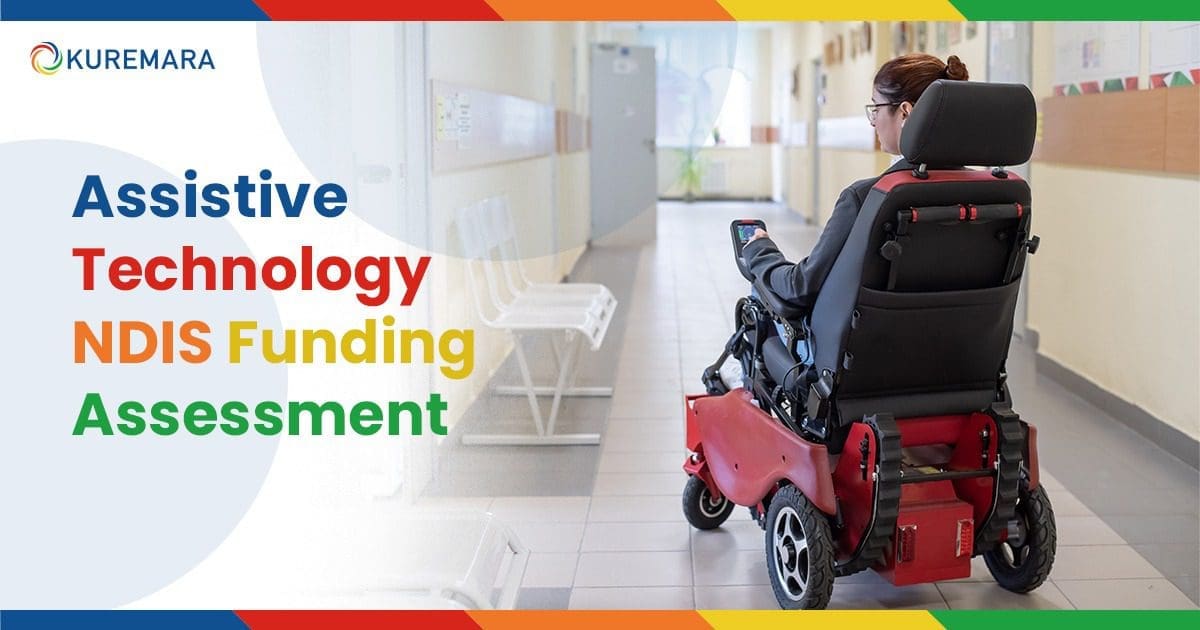
- NDIS participants will need to complete an assistive technology assessment to access funding for NDIS assistive technology. NDIS and the disabled participants need to understand which AT solutions are most suitable for your needs and goals.
- The assessment process requires an understanding of the kind of NDIS assistive technology the participants need – low cost-low risk or high cost-high risk. You can handle the
- It is worth noting that the process that the NDIS participants will go through depends on the assistive technology required. For instance, if items are low-cost or low-risk, the participants do not need a form to be sent directly to the NDIS. Instead, if the participants have funds in their NDIS plan, they can find the equipment and purchase it.
- However if the participants require high-risk, complex and specialised NDIS assistive technology, they have to undergo a full assessment form conducted by the AT assessor. This could be due to specific concerns about the individual or the environment where the equipment is going to be used.
- NDIS participants can have access to NDIS assistive technology equipment when their needs are complicated. Then the evidence needs to be in writing from an assistive technology advisor. It needs to confirm that the chosen AT device is the most appropriate solution for your disability support needs.
- After the evidence is provided, NDIS assistive technology providers include funding for the item in the participants’ plan if it meets all the NDIS funding criteria.
- A disabled individual requires an AT assessor to make sure they get the assistive technology NDIS that’s right for you. It is always good that the participants buy their own AT but sometimes it can be rented. This is true if their needs are likely to change.
- The Assistive Technology – Guide for low-cost support funding (DOCX 71KB) will help the participants understand how much funding is required to buy low-cost AT. NDIS participants don’t need to provide quotes for AT items under $15,000, but some evidence (including a cost estimate) is required to make sure the participants get the right AT.
You can use your own money or funding from other sources to buy additional features or access additional services that may not fall under reasonable and necessary NDIS-approved products in your NDIS plan. For AT costing more than $15,000, we require both an assessment by a professional AT advisor (sometimes called an AT assessor) and a quote for the AT proposed items.
NDIS Assistive Technology Funding and Support
As a registered NDIS provider, Kuremara can help you use your funding to purchase high-quality AT that helps you reach your goals. There are different levels of Assistive Technology NDIS funding that is available, as categorised by the National Disability Insurance Agency.
Level 1 (simple, low-risk AT) – is NDIS low-cost assistive technology solutions The disabled individual can choose and purchase it from everyday suppliers, such as the local pharmacy. These devices need very little setup and assistance to use and essentially include daily living solutions and daily adaptive equipment. Assistive technology NDIS examples include non-slip bathmats, adapted grip equipment, continence pads, bedding protectors, large print labels and doorbells
Level 2 (standard AT) – products that can be purchased from an Assistive Technology provider. Depending on your individual needs, you may require an assessment with only minor adjustments. Assistive technology NDIS examples include bath seats, ramps and handrails, simple bathing and toileting devices, chair raisers, slide sheets and transfer equipment and orthotics
Level 3 (specialised AT) – often requires modification to suit the specific needs of disabled individuals. An assessment is required from an experienced professional as well as help with setting up this equipment. Assistive technology NDIS examples include key home modifications such as desktop electronic magnification, power wheelchairs, pressure mattresses, equipment that moves and lifts you, environmental control units, and non-standard beds.
Level 4 (Complex AT) – is not available on the shelf and is usually custom-made to suit the disabled individual’s needs. It can be prepared specifically for one person’s needs only. Continual specialist training is required to recognise, buy and use these items. Assistive technology NDIS examples include home modifications that are considered to be complex, cochlear implants, myoelectric prosthetics and implant speech processes.
Future of Assistive Technology in NDIS
Technology is advancing at a rapid pace and the potential for assistive tech NDIS is vast. AT potential technological growth can transform smart home solutions providing automation through voice commands at home to allow independent control of the house. Smart devices make daily tasks more accessible.
Virtual Reality (VR) and Augmented Reality (AR) applications can simulate environments for individuals with disabilities, to help them practice daily living skills, job training, and rehabilitation. AR can improve accessibility by giving information and real-time assistance in daily life.
Mobile Applications designed with the specific needs of NDIS-disabled participants can assist in communication, task management, and accessibility. Robotics and Prosthetics provide potential for NDIS-disabled participants to enhance their mobility and independence. Exoskeletons can improve the walking and mobility of disabled individuals.
Know Kuremara’s Role in Aiding You Access NDIS-Approved Products
As a registered NDIS provider, Kuremara can help you get approved for the equipment you need and gain the ultimate benefits from NDIS-approved products.
We can help you explore your assistive tech NDIS devices according to your needs and the different options available. Your NDIS funding can cover the option to choose, trial, and select new forms of AT to aid you in accomplishing your goals and leading an independent and better life.
Our team will give you the best ways to explore NDIS assistive technology that can fit into your plan and be incorporated into your care routine. Our expert team is highly knowledgeable about everything related to Assistive Technology. We will guide you to find the right solution that fits your requirements perfectly. You will even be able to explore different advice options and fittings that will help you effectively fulfill your assistive technology NDIS requirements.
Conclusion
Assistive technology is an absolute game-changer for individuals with disabilities under the NDIS plan. It functions to empower lives, enhance independence, and improve better quality of life. As we are in a digital and technology-focused world, it is vital to continue to adapt to the updated improvements in assistive technology. We can ensure a world with the right tools for the NDIS disabled participants to thrive and excel in their life accomplishments.
 care@kuremara.com.au
care@kuremara.com.au

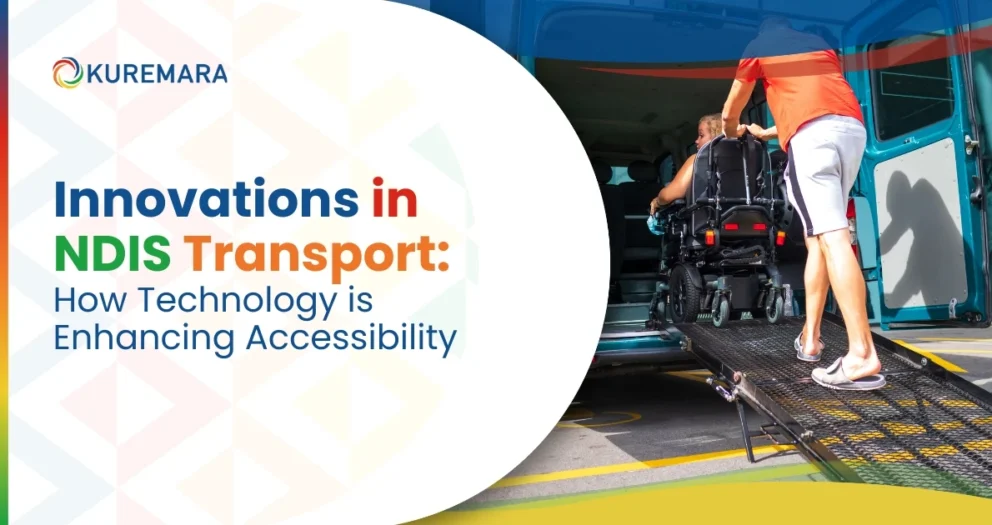

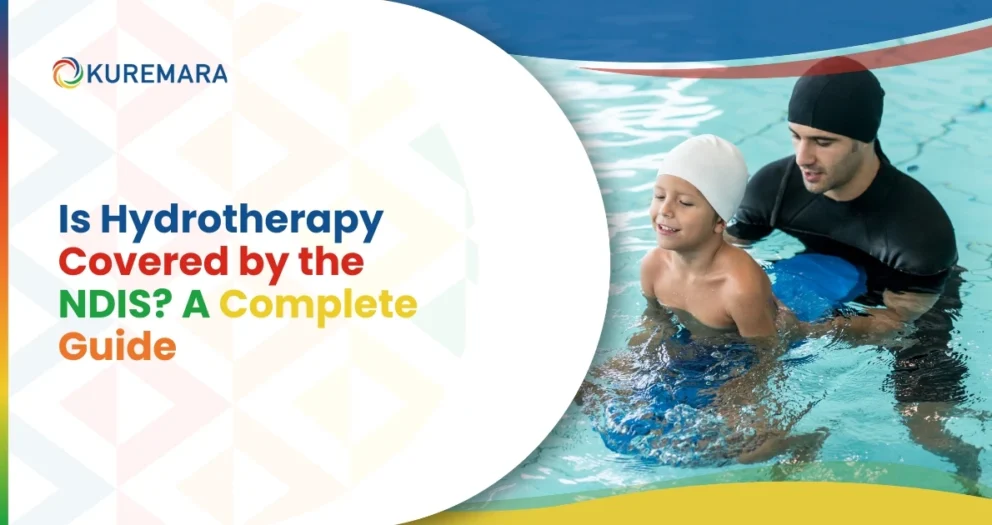
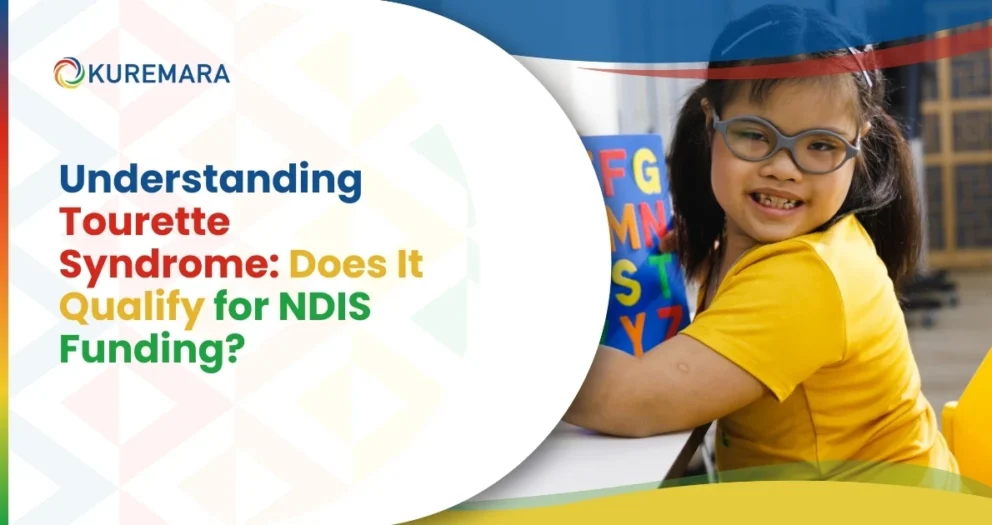
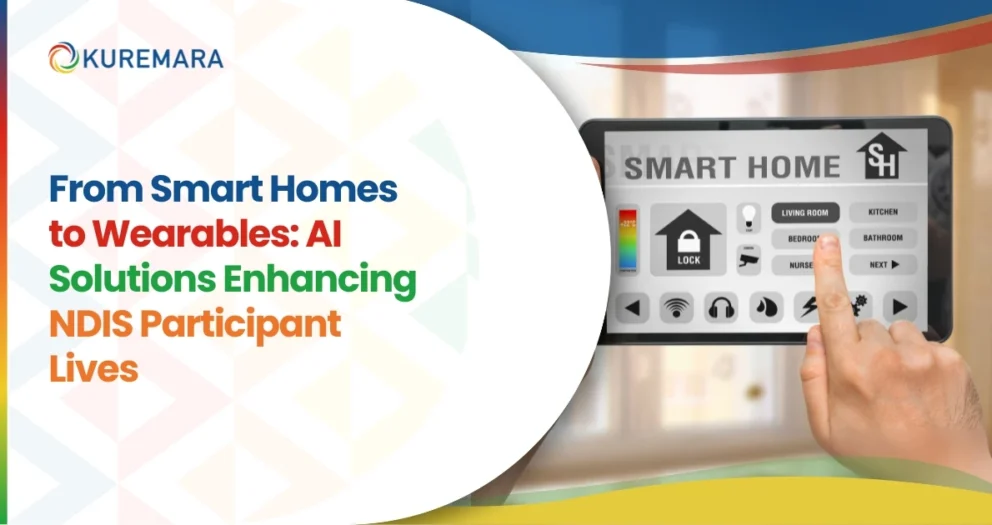
Write a comment
Your email address will not be published. All fields are required